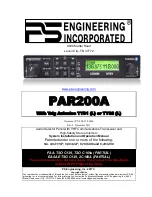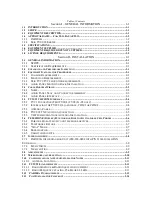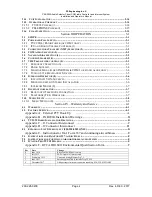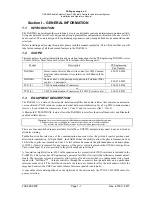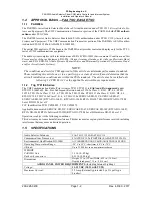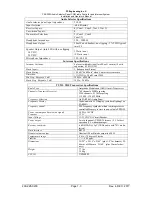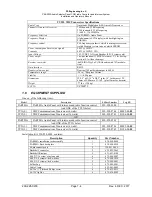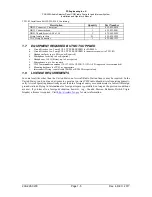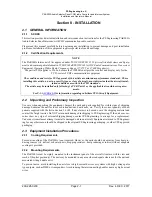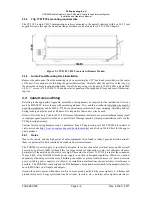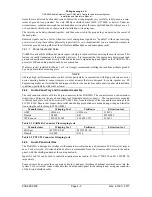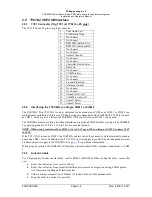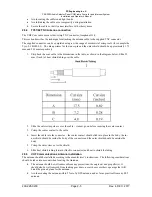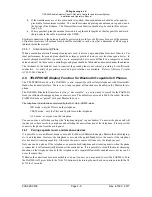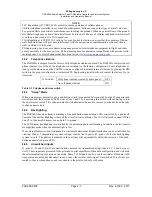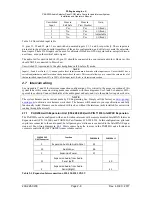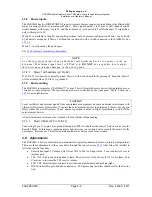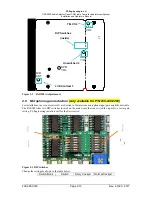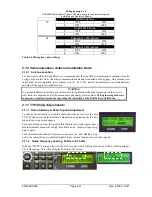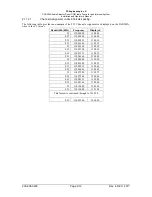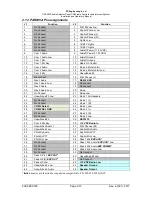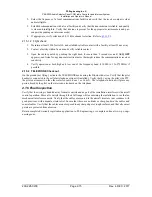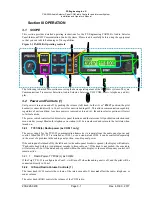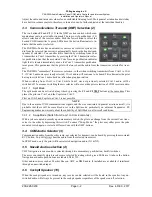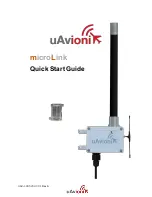
PS Engineering Inc. ®
PAR200A Audio Selector Panel, COM radio Controller and Intercom System
Installation and Operator’s Manual
200-228-0200
Page 2-2
Rev. 4, DEC. 2017
2.3.3
Trig TY91/TY92 mounting requirements
The TY91/92 remote VHF Communications radio is mounted to the aircraft structure with 4 ea #6-32 (not
supplied) screws through the mounting flange. Guidance can be found in AC 43.13-2B, Chapter 2.
Figure 2-1 TY91/92 VHF Transceiver (Remote Mount)
2.3.4
Audio Panel Mounting Rack Installation
Remove the audio panel from the mounting tray by unscrewing the 3/32" hex-head screw that is in the center
of the unit. Use caution to avoid hitting the photo-detector lens. Carefully slide the unit free of the tray. Set
the unit aside in a safe location until needed. Install the tray using six clip nuts (475-630-0002), and six FHP
6-32 x ½" screws (475-632-0012). The audio selector panel must be supported at front and rear of the mount-
ing tray.
2.4 Cable Harness Wiring
Referring to the appropriate Appendix, assemble a wiring harness as required for the installation. All wires
must be MIL-SPEC in accordance with current regulations. Two- and three-conductor shielded wire must be
used where indicated, and be MIL-C-27500 or equivalent specification. Proper stripping, shielding and sol-
dering technique must be used at all times. It is imperative that correct wire be used.
Refer to FAA Advisory Circular 43.13-2B for more information. Failure to use correct techniques may result
in improper operation, electrical noise or unit failure. Damage caused by improper installation will void the
PS Engineering warranty.
Custom factory wiring harnesses can be purchased from PS Engineering, call 865-988-9800 for details or
visit our website
http://www.ps-engineering.com/downloads.shtml
and click on Work Sheet for the appro-
priate product.
2.4.1
Noise
Due to the variety and the high power of radio equipment often found in today's general aviation aircraft,
there is a potential for both radiated and conducted noise interference.
The PAR200A power supply is specifically designed to reduce conducted electrical noise on the aircraft
power bus by at least 50dB. Although this is a large amount of attenuation, it may not eliminate all noise,
particularly if the amplitude of noise is very high. There must be at least 13.8 VDC present at the connector,
J2 pins 8 & 9, of the PAR200A for the power supply to work in its designed regulation. Otherwise, it cannot
adequately attenuate power line noise. Shielding can reduce or prevent radiated noise (i.e., beacon, electric
gyros, switching power supplies, etc.) However, installation combinations can occur where interference is
possible. The PAR200A was designed in a RFI hardened chassis and has internal Electromagnetic Interfer-
ence (EMI) filters on all inputs and outputs.
Ground loop noise occurs when there are two or more ground paths for the same signal (i.e., airframe and
ground return wire). Large cyclic loads such as strobes, inverters, etc., can inject noise signals onto the air-

